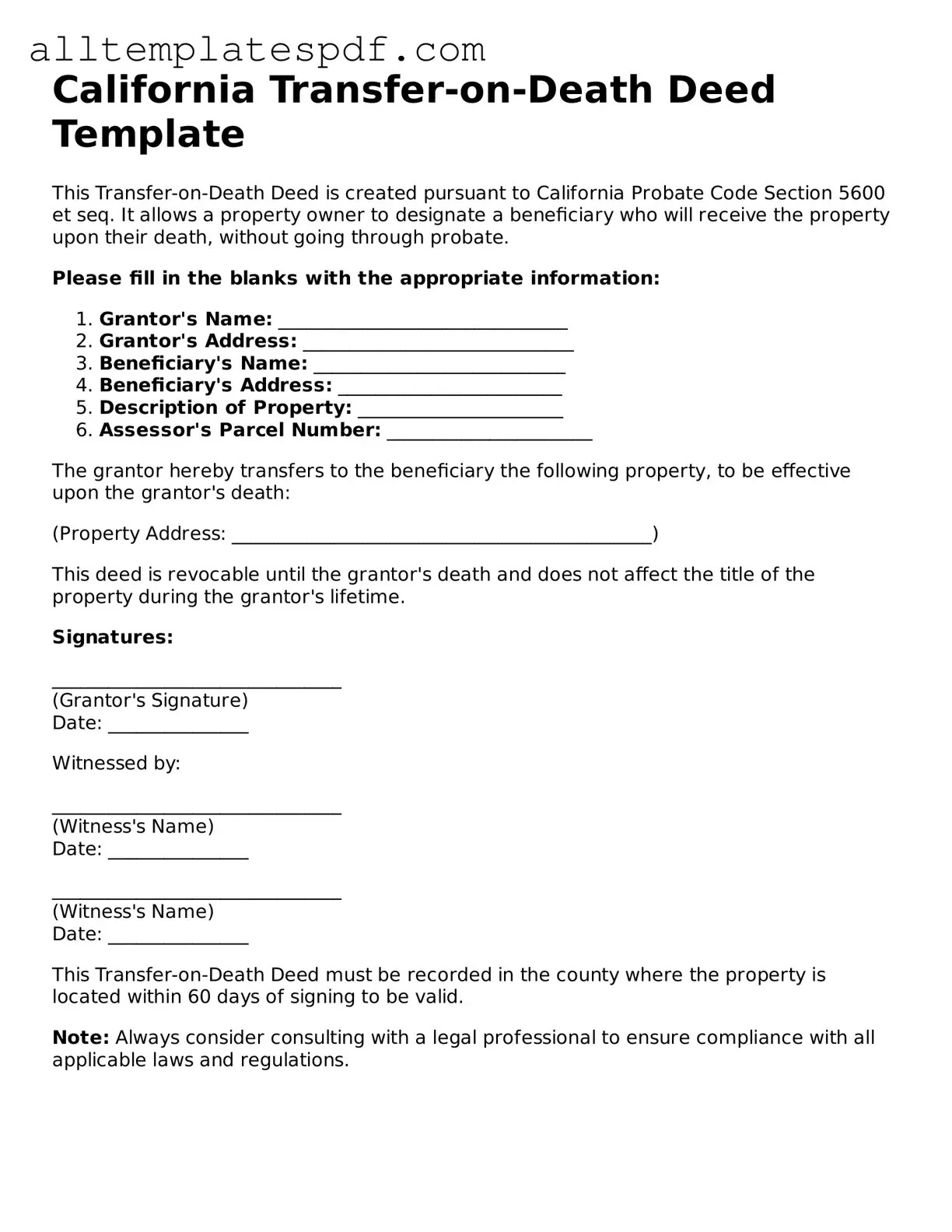Filling out the California Transfer-on-Death Deed form can be straightforward, but many people make common mistakes that can lead to complications down the line. One frequent error is not properly identifying the property. It’s crucial to include the correct address and legal description of the property. Omitting this information can cause confusion and potentially invalidate the deed.
Another mistake is failing to sign the deed. The form requires signatures from all property owners. If one owner neglects to sign, the deed may not be valid. This can lead to disputes among heirs later on.
People also often forget to have the deed notarized. In California, a Transfer-on-Death Deed must be notarized to be legally binding. Without this step, the deed may not hold up in court, which can create issues for beneficiaries.
Some individuals incorrectly assume that the deed takes effect immediately. In reality, the Transfer-on-Death Deed only transfers property upon the death of the owner. Misunderstanding this can lead to mismanagement of the property while the owner is still alive.
Another common error involves not updating the deed after changes in ownership. If a property is sold or refinanced, the original deed may need adjustments. Failing to do so can create confusion about who the actual owner is.
People sometimes overlook the importance of naming beneficiaries clearly. Ambiguous language can lead to disputes among family members. It’s best to be specific about who will inherit the property to avoid any misunderstandings.
Some individuals may forget to record the deed with the county recorder’s office. Even if the deed is filled out correctly, it must be recorded to be enforceable. Without this step, the intended beneficiaries may not receive the property as planned.
Another mistake is not considering the tax implications of the Transfer-on-Death Deed. While it may avoid probate, it can still have tax consequences. Consulting with a tax professional can help ensure that beneficiaries are not caught off guard.
People also sometimes fail to communicate their intentions with family members. Not discussing the Transfer-on-Death Deed with heirs can lead to surprises and resentment. Open communication can help manage expectations and reduce potential conflicts.
Lastly, neglecting to review the deed regularly is a common oversight. Life changes, such as marriage, divorce, or the birth of children, may necessitate updates to the deed. Regular reviews can ensure that the deed reflects current wishes and family dynamics.
